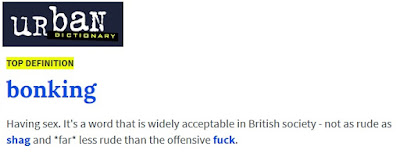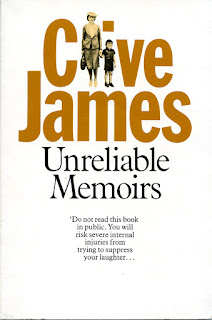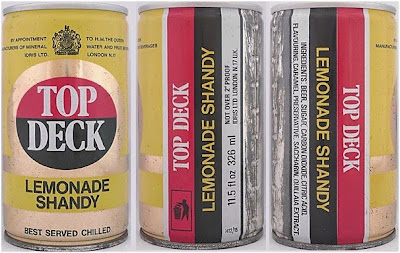(First posted 2nd June 2015. Contains strong language.)
“There I was driving through Holmfirth,” someone said, “and who did I see but Dora Bryan getting out of her car! She must have been filming Last of the Summer Wine. She’s ever so agile for eighty. It must be the dance training.”
“That’s nothing,” someone else said. “I queued next to John Simpson in Lakeland Plastics in York. He was on crutches through being injured in Bosnia.”
“Well, we spotted Ed Miliband in the buffet at Sheffield station,” said a third, “and then Nick Clegg came in. They were taking the piss out each other.”
Why do we have such a need to tell everyone about our encounters with fame? We all do it. The warm glow of vicarious celebrity?
I can’t even resist talking about others who come across someone famous, such as the bloke at work whose cousin was actor Bernard Hepton, or my landlady who lived in the next street to Diana Rigg’s parents. You could write a computer program to generate it: someone you know sees someone you’ve vaguely heard of in some situation at a particular location.
Another landlord told me how, when he worked nights in the ticket office at Leeds Central Station, “that great pansy” Jimmy Savile would turn up after the dance halls had closed, and walk noisily through the station concourse in his long bleached hair and flamboyant clothes drawing attention to himself. “Here he is again,” they used to say, “that big puff, looking for somebody to talk to and hoping to cadge a cup of tea.” We now know he was looking for something else too, but at the time my landlord’s views seemed a little outdated.
The Savile story was always followed by another about his daughter having been at school with Philip Stone, an actor with a head like a light bulb who was in every other television drama you saw.
They gossip just as much in the fame business itself. In my first job we audited a studio where they made television adverts, where they thought it important to let you know that B.B.C. Look North presenters came in to record voiceovers, and that they once filmed with Benny Hill. “He went off on his own. No one knew where he’d gone. We thought we’d lost him. Turned out he’d gone to the pictures.”
My uncle was one of the few unaffected, despite meeting hundreds of politicians and celebrities through his work in Health and Safety in London. He was there when lasers were beginning to be used in visual effects at concerts, and was annoyed about having to work late one evening to evaluate the risks. “What an awful week,” he complained to his trendy secretary, “just about everything that can go wrong has gone wrong. On top of that I’ve got to attend some awful pop concert tonight ... Tom Bowie? ... John Bowie? ... something like that.” His secretary was not very sympathetic. My uncle was subsequently quoted in the press as saying that some young girl will have her eye burned out before people realise how dangerous lasers are.
Well, let me tell you, I’ve had my own encounters too. There was the time with my mum on the promenade at Great Yarmouth when she suddenly said “That was Des O’Connor”, referring to a slim young man in sunglasses carrying a light jacket over his shoulder, who had just sauntered past in the opposite direction. “Who?” I asked, and remained little the wiser because his show was the one we didn’t bother to see. And I once saw Jack Charlton in his Range Rover in the Yorkshire Dales.
But my greatest claim to fame is that I stood on Philip Larkin’s foot. I was killing time in the university library so as not to have to bike home without a coat in the rain, when I came across an exhibition of original poetry manuscripts. There were some by Stevie Smith, and one in Andrew Motion’s tiny hand about an aeroplane appearing over the brow of a hill. No one had heard of Andrew Motion then. I knew him through being in one of his tutorial groups.
Other manuscripts were by the great man Philip Larkin himself, the Hull University librarian. That’s what I’d been peering at when, in the limbo-esque silence, I stepped back to move from one display case to the next and trod heavily on something lumpy, which turned out to be Philip Larkin’s foot. His gloomy, bespectacled hulk had been attempting to creep past unheard. I got the full-on, forehead-focused, withering laser-glare, directed through industrial strength frames and lenses. Bits of my brain were crisped and frizzled. Any hopes I had of becoming a proper writer were clinically extirpated. Lucky I didn’t get my eyes burned out. He skulked off without a word.
Even this story is pretty feeble. The poet Roger McGough tells a much better one about his friend Neville waiting for a bus in the soaking rain when up looms Larkin protected by “the black dome of a capacious umbrella”. Neville eventually plucks up the courage to speak, “I did enjoy The North Ship [a collection of Larkin’s early poems],” at which Larkin glares back and says, “If you think you can begin a conversation with me in order to share my umbrella you’ve got another think coming.”
My day will come! Imagine them all together, burning in some blazing afterlife inferno, condemned to eternal damnation for their vanity:
| O’Connor: |
Tasker Dunham? I remember him. His mother smiled at me at Great Yarmouth. Wonderful people! They loved my show there. |
| Rigg: |
I adored him. I knew him so well. He lodged near my parents. |
| Stone: |
How coincidental! He lodged with one of my schoolfriend’s parents too. Marvellous sense of humour. |
| Savile: |
Now then now then! That was my great friend, Mr. Night Time Ticket Office Man. How’s about that then? |
| Hepton: |
Wasn’t he the clever chap who worked with my cousin? |
| Hill: |
Yes, of course, where I filmed an ad. I wanted him to write a script for me. |
| Motion: |
Well I had the deep privilege of actually teaching him. Very bright. Profound postmodern-romantic sensibility. |
| Charlton: |
Handy with his feet too. Could’ve used him at Boro. |
| Larkin: |
Handy with his feet? That bastard Dunham! There he was, hatless in his cycle clips, perusing my verse in awkward reverence, when he stamped on my foot. Deliberate! Said he did not mean to but he did. As if he’d leapt off a coastal shelf. They fucked him up his mum and dad. Filled him with all the faults they had. And some extra. Glad I had no kids myself. I was only going to suggest he write one of those blog things to develop his style. |
Philip Larkin’s image is from the cover of his book ‘All What Jazz’.
Philip Larkin (1922-1985) was a leading English poet, novelist and jazz critic, who from 1955 was also the University Librarian at Hull. He was a tall, large, heavily bespectacled man who carried a perpetual air of gloomy misanthropy about him. He could also be hilariously funny. The last paragraph plagiarises two of his best known poems, ‘This Be The Verse’ and ‘Church Going’.
Dora Bryan (1923-2014) was an English actress and comedienne. One of her last television roles was in the comedy series ‘Last of the Summer Wine’ filmed in Holmfirth, West Yorkshire.
John Simpson (born 1944) is a veteran B.B.C. foreign correspondent.
Ed Miliband (born 1969) and Nick Clegg (born 1967) were prominent British politicians who led the Labour and Liberal Democrat parties. Both resigned their leaderships immediately after the 2015 General Election. Nick Clegg then left politics and is now a Vice-President at Facebook.
Bernard Hepton (1925-2018) and Philip Stone (1924-2003) were actors from Bradford and Leeds who appeared in numerous British films and television productions during the 1960s, 1970s and 1980s.
Diana Rigg (1938-2020) was an acclaimed English actress known for her major television, film and theatre roles, but perhaps most famous for her roles in the television series ‘The Avengers’ (1965-68) and more recently ‘Game of Thrones’ (2013-).
Jimmy Savile (1926-2011) was a well known television personality and charity fundraiser who originated from Leeds. After his death it emerged he had been a highly prolific predatory paedophile and sex offender of gargantuan proportions.
Benny Hill (1924-1992) was an English comedian and actor. He was widely popular in his day but subsequently fell out of favour because many considered his humour to be sexist.
David Bowie (1947-2016) was an English singer and songwriter who many considered innovative.
Des O’Connor (1932-2020) was a popular English comedian, singer and television presenter.
Jack
Charlton (1935-2020) was a Leeds United footballer and member of the England 1966 World Cup winning team. He later managed Ireland. When I saw him he was manager of Middlesbrough (“Boro”).
Andrew Motion (born 1952) is an English poet, novelist and biographer who lectured at Hull University from 1976 to 1980 and served the country as Poet Laureate from 1999 to 2009. Roger McGough (born 1937) is an English poet and author who was a student at Hull University from 1955, arriving there the same year as Philip Larkin.




































